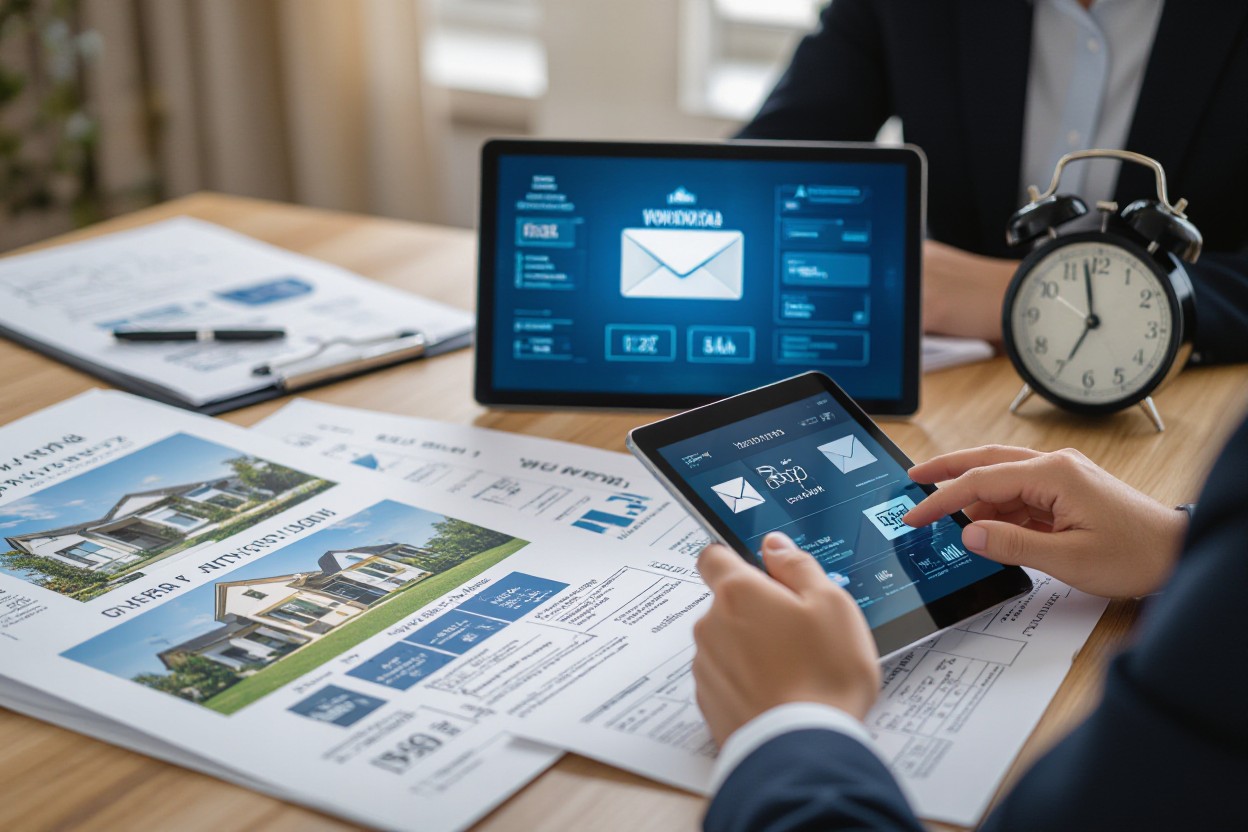Email Marketing for Real Estate Agents
There’s a powerful way you can connect with potential buyers and sellers that often goes overlooked: email marketing. By crafting targeted campaigns and leveraging your existing contacts, you can nurture leads, showcase new listings, and build lasting relationships. Understanding how to use segmentation, personalization, and compelling calls-to-action will help you stand out in a competitive real estate market and boost your sales success.
Unlocking the Potential of Your Email List
Turning your email list into a high-performing marketing asset starts with understanding the unique needs and preferences of your contacts. Whether you’re targeting first-time homebuyers, luxury clients, or investment property seekers, tailoring your messages to resonate personally drives higher open rates and response. Utilizing real estate-specific triggers like new listings, market reports, or neighborhood updates keeps your audience engaged and positions you as the go-to agent, accelerating your sales pipeline.
Building a Targeted Subscriber Base
Focus on attracting subscribers who align with your ideal client profiles by offering valuable lead magnets such as local market guides, home valuation reports, or exclusive open house invitations. Use your website, social media channels, and in-person events to capture contact information, ensuring opt-in forms are simple and mobile-friendly. Prioritizing quality over quantity ensures your email list consists of genuinely interested prospects likely to convert into active buyers or motivated sellers.
Segmenting for Maximum Engagement
Divide your email list into segments based on factors like buyer vs. seller status, property preferences, budget ranges, or geographic areas. This segmentation lets you deliver highly relevant content, such as neighborhood-specific listings or financing tips tailored to first-time purchasers, which increases click-through rates and nurtures leads effectively. The right segmentation strategy keeps your messages from feeling generic, turning your campaigns into personalized conversations.
Advanced segmentation can include behavioral data, like tracking which property types subscribers click on or how they interact with past emails. For example, sending a curated list of condos to contacts who’ve shown interest in urban living captures attention more efficiently. Combining demographic, geographic, and engagement metrics allows you to design drip campaigns that anticipate client needs, resulting in higher conversion rates and stronger relationships throughout the buying or selling journey.

Crafting Irresistible Content That Converts
Emails that truly resonate combine concise property highlights, clear calls-to-action, and compelling visuals showcasing listings or neighborhood features. Focus on benefits—such as move-in ready homes or exclusive virtual tours—rather than just features. Use bullet points to outline unique selling propositions and sprinkle in testimonials to build trust. Incorporate local market data or recent sales stats to demonstrate your expertise, making subscribers more likely to engage and respond to offers.
Subject Lines that Demand Attention
Subject lines driving high open rates often include urgency or intrigue, like “3 Stunning Homes Just Listed Near You” or “Unlock Your Dream Home Before It’s Gone.” Including local keywords (e.g., “Downtown Lofts,” “Suburban Family Homes”) connects instantly to your audience’s interests. Avoid vague phrasing; instead, hint at exclusivity or new opportunities to push prospects toward opening the email.
Personalization Techniques to Boost Read Rates
Integrating personalized elements such as the recipient’s first name or referencing recent browsing activity in your subject line or preview text lifts open rates by over 20%. Tailoring messages based on buyer stage—like first-time homebuyers versus investors—and segmenting your list ensures each email speaks directly to your recipients’ unique needs and behaviors.
Beyond simple name insertion, deeper personalization taps into demographics, past interactions, and preferences. Using data from your CRM, you can suggest properties aligned with previously viewed listings or neighborhoods they’ve expressed interest in. Dynamic content blocks help display customized calls-to-action, improving click-through rates significantly. Studies show emails customized at this level can increase engagement by up to 50%, turning passive leads into active clients faster.

Timing is Everything: Sending Strategies That Work
Optimal Times to Hit Send
Data from real estate email campaigns shows that midweek mornings—especially Tuesday and Thursday between 9 a.m. and 11 a.m.—generate higher open rates. Buyers often review listings after their morning routines, while weekends tend to have lower engagement due to personal activities. Testing your specific audience’s behavior by tracking open and click-through rates at various times can help refine your schedule. For example, local market newsletters sent at 10 a.m. saw a 20% increase in inquiries compared to evening sends.
Frequency: Finding the Sweet Spot
Striking the right balance in email frequency keeps your audience engaged without causing fatigue. Sending one to two emails per week maintains consistent contact, nurturing leads without overwhelming potential buyers or sellers. Overmailing can trigger unsubscribes, while too few touchpoints risk losing audience attention. Segmenting your list into hot leads, prospects, and past clients allows you to tailor your sending cadence effectively.
Diving deeper, real estate agents who send weekly newsletters combined with targeted property alerts experience higher conversion rates—sometimes up to 30% more—than those with sporadic outreach. Using behavioral triggers, like new listing alerts or price reductions, can supplement your regular emails and maintain relevance. Monitoring unsubscribe rates alongside engagement metrics will guide you in adjusting frequency to your audience’s preferences while maximizing opportunities for showing appointments and signed contracts.
Analyzing Your Success: Metrics that Matter
Tracking performance metrics like open rates, click-through rates (CTR), and conversion rates gives you a clear picture of how your email campaigns are performing. By comparing these KPIs across different listings or segmented buyer personas, you can identify what types of content, subject lines, and offers motivate your audience to engage. This insight allows you to optimize your messaging to generate more qualified leads and expedite closings.
Understanding Open and Click-Through Rates
Open rates reveal how well your subject lines and sender reputation attract attention in crowded inboxes, while click-through rates gauge how compelling your listing previews and calls-to-action are. A strong open rate above 20% paired with a CTR around 3-5% typically indicates your content resonates with buyers or sellers. Tracking these over time highlights trends linked to seasonal market shifts or property type preferences.
A/B Testing: Fine-Tuning Your Approach
A/B testing lets you compare variations of subject lines, email layouts, or CTA buttons to see which drives higher engagement. Running tests regularly helps you refine your campaigns, from showcasing luxury condos to first-time homebuyer guides, ensuring your messages hit the right tone and motivate recipients to take action.
For example, testing two subject lines—“Explore This Cozy 3-Bedroom in Downtown” versus “Your Dream Home Awaits! Tour This 3-Bedroom Now”—can reveal which wording resonates best with your target segment. Similarly, experimenting with button copy like “Schedule a Showing” versus “Get More Info” can impact your click rates significantly. Leveraging these insights consistently allows you to adapt your email marketing strategy according to buyer behavior and market trends, increasing your chances of converting email readers into clients.
Leveraging Automation for Efficiency and Impact
Automating your email sequences lets you maintain consistent communication with leads without manual effort, allowing you to focus on closing deals. By using automation tools, you can schedule property updates, market reports, and personalized messages timed around key moments like open houses or contract milestones. This approach increases engagement rates, with some agencies reporting a 30% boost in lead conversion simply by automating follow-ups and segmentation based on buyer intent and behavior. Automation also ensures no hot lead slips through the cracks, streamlining your sales funnel from prospecting to closing.
Setting Up Drip Campaigns for Lead Nurturing
Drip campaigns deliver a series of targeted emails over a set period, gradually building trust and moving buyers and sellers closer to decisions. Craft sequences that combine neighborhood insights, client testimonials, and new listings tailored to the lead’s preferences. For example, you might send a welcome email, followed by market updates, then invitations to virtual tours, keeping your agency top of mind. Studies show drip emails generate 80% more sales opportunities, making them invaluable for nurturing cold or warm leads into active clients.
The Power of Automated Follow-Ups
Automated follow-ups instantly respond to inquiries and actions like downloads or showing requests, increasing the chances of re-engagement when interest is highest. You can program reminders for open house RSVPs or check-ins post-property visits, providing timely touchpoints that feel personal without extra workload. Implementing multi-step follow-ups can raise reply rates by up to 70%, turning casual prospects into committed buyers.
Going deeper, automated follow-ups allow you to assign lead scores based on recipient engagement such as email opens, clicks, and website visits. This data-driven approach prioritizes high-potential clients, so you focus your efforts on prospects most likely to convert. Additionally, integrating CRM platforms with your email system enables seamless syncing of contact info and behavior, ensuring personalized follow-ups feel authentic and informed, not robotic. Some agents use behavioral triggers, like property price range interest, to send highly relevant listings instantly, increasing appointment bookings and accelerating the sales cycle.
Summing up
So, by leveraging targeted email campaigns, personalized content, and segmented lists, you can nurture leads and stay top-of-mind with potential buyers and sellers. Your email marketing strategy should focus on delivering valuable insights, property updates, and market trends that build trust and encourage engagement. When executed thoughtfully, email marketing becomes a powerful tool to grow your client base, increase conversions, and ultimately close more deals in your real estate business.
FAQ
Q: How can email marketing help me generate more real estate leads?
A: Email marketing allows you to stay top-of-mind with potential buyers and sellers by providing valuable content, market updates, and new listing information directly to their inbox. By segmenting your contact list based on buyer preferences, location, and stage in the sales funnel, you can send personalized messages that engage recipients and encourage them to reach out. Regular communication builds trust and positions you as a knowledgeable local expert, increasing the likelihood of converting leads into clients.
Q: What type of email content works best for real estate audiences?
A: Effective email content includes new property listings, virtual tour invitations, market trend reports, homebuying or selling tips, and community news. Educational content such as mortgage advice, staging tips, and neighborhood spotlights also resonates well. Including clear calls-to-action like scheduling a showing or attending an open house helps drive engagement. Using high-quality images and concise, compelling copy enhances the chances that recipients will read and act on your emails.
Q: How often should I send emails to my real estate contacts?
A: Frequency depends on your audience and the type of content you share, but a common recommendation is to send emails between once a week to twice a month. Staying consistent keeps your audience engaged without overwhelming them. For segmented lists, you might increase frequency for warm leads with property updates while sending less frequent newsletters to prospects just beginning their home search.
Q: What are the best practices for building an email list as a real estate agent?
A: Start by collecting emails through your website with lead capture forms offering valuable resources, such as free eBooks on home buying or neighborhood guides. Use sign-up sheets at open houses and networking events to gather contacts. Integrate social media calls-to-action directing followers to subscribe. Always ask for permission to send marketing emails and clearly state the benefits to encourage sign-ups. Maintaining a clean, updated list ensures higher deliverability and engagement rates.
Q: How can I use automation in my real estate email marketing strategy?
A: Automation helps you nurture leads efficiently by sending timely, relevant emails based on user behavior or predefined triggers. For example, you can set up welcome sequences for new subscribers, follow-up emails after property inquiries, and reminders about upcoming appointments or open houses. Using drip campaigns educates prospects over time, warming them up until they are ready to buy or sell. Automation saves time and ensures no lead is overlooked in your sales pipeline.
